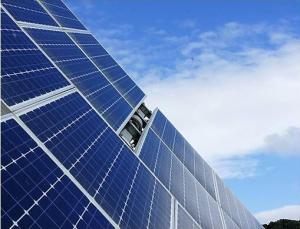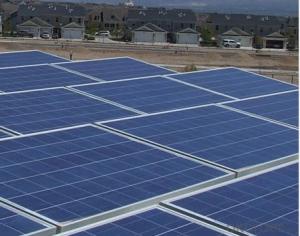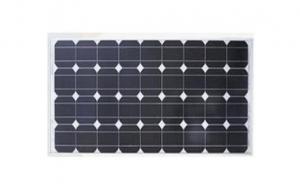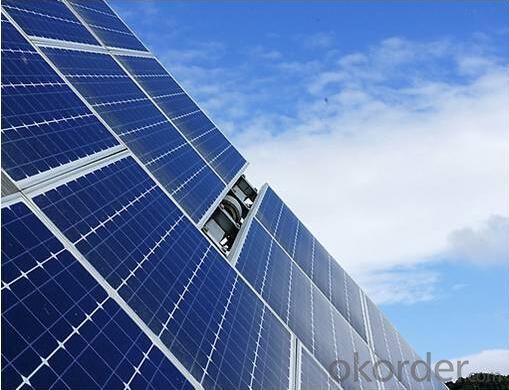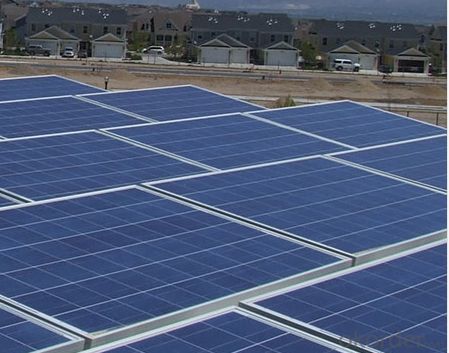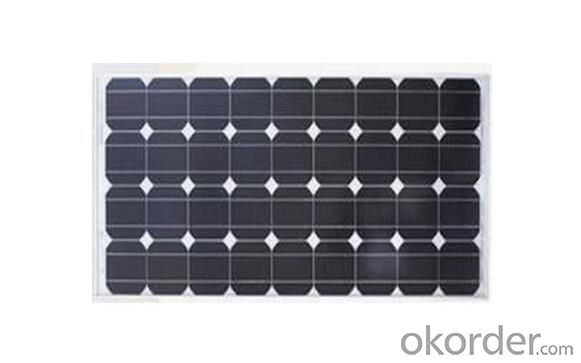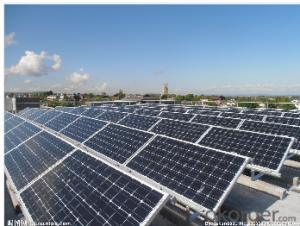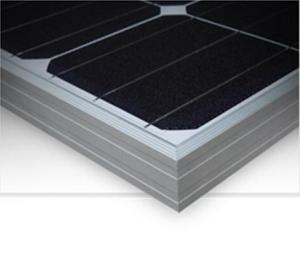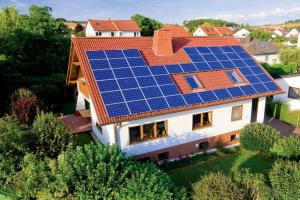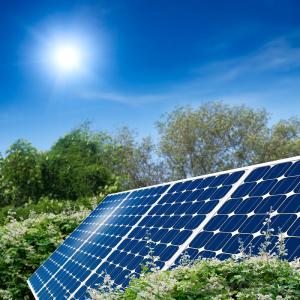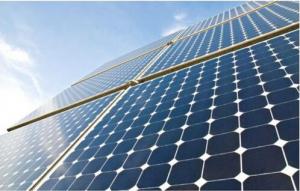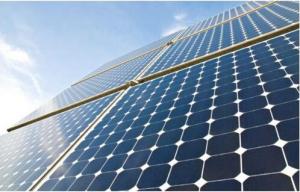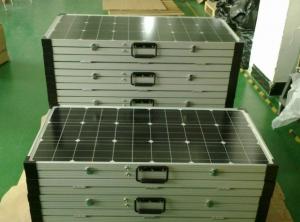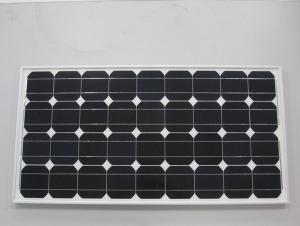Solar Panels With Outlet - Monocrystalline Silicon Solar Modules 48cell-205w
- Loading Port:
- China Main Port
- Payment Terms:
- TT or LC
- Min Order Qty:
- 20500 watt
- Supply Capability:
- 10000000 watt/month
OKorder Service Pledge
OKorder Financial Service
You Might Also Like
1. Structure of Monocrystalline Silicon Solar Modules 48Cell-205W Description
Solar panel refers either to a photovoltaics (PV) module, a solar hot water panel, or to a set of solar photovoltaics modules electrically
connected and mounted on a supporting structure. A PV module is a packaged, connected assembly of solar cells. Solar panels can be
used as a component of a larger photovoltaic system to generate and supply electricity in commercial and residential applications. Each
module is rated by its DC output power under standard test conditions, and typically ranges from 100 to 320 watts.
2. Main Features of the Monocrystalline Silicon Solar Modules 48Cell-205W
*QUALIFICATIONS & CERTIFICATES
IEC 61215, IEC 61730, MCS, CE, ISO 9001:2008, ISO 14001:2004, BS OHSAS 18001:2007, PV Cycle, SA 8000
.
3. Monocrystalline Silicon Solar Modules 48Cell-205W Images
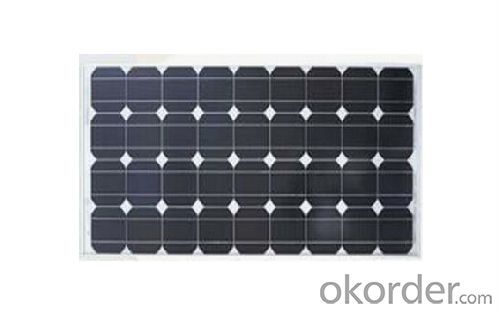
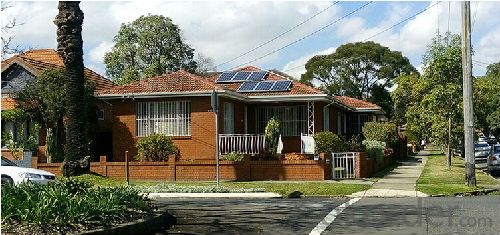
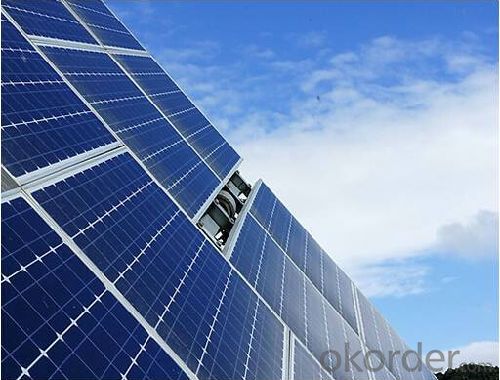
4. Monocrystalline Silicon Solar Modules 48Cell-205W Specification
Electrical parameters at Standard Test Conditions (STC) | |||
Power output | P max | W | 290 |
Power output tolerances | ΔP max | W | 0 / + 5 |
Module effi ciency | η m | % | 14.9 |
Voltage at Pmax | V mpp | V | 35.3 |
Current at Pmax | I mpp | A | 8.22 |
Open-circuit voltage | V oc | V | 44.8 |
Short-circuit current | I sc | A | 8.73 |
GENERAL CHARACTERISTICS | |
Dimensions(L/W/H) | 1310mm/990mm/40mm |
Weight | 14.7kg |
PACKAGING SPECIFICATION | |
Number of modules per pallet | 26 |
Number of pallets per 40'container | 32 |
Packaging box dimensions(L/W/H) | 1380mm/1160mm/1178mm |
Box weight | 410kg |
5. FAQ of Monocrystalline Silicon Solar Modules 48Cell-205W
Q1:Can we visit your factory?
A1:Sure,welcome at any time,seeing is believing.
Q2:Which payment terms can you accept?
A2:T/T,L/C,Moneygram,Paypal are available for us.
Q3:How to guarantee the Quality of the products?
A3:We have established the international advanced Quality management system,every link from raw material to final product we have strict
Quality test;We resolutely put an end to unQualified products flowing into the market. At the same time, we will provide necessary follow-up
service assurance.
- Q: solar panels!!they are fantastic! cause they are the new way of quot;chargingyour home, without killing the earth!would you install them, or not? and make sure you say WHY
- Why: ) It's a great technology. 2) It has low impact to the environment. Why Not: ) Initial cost is substantial. 2) solar panel technology is greatly improving. I would hold out for a few more years when you can actually use it as a sustainable source and as a replacement source and not so much a suplimentary source.
- Q: Can solar panels be installed on a parking lot or carport?
- Yes, solar panels can be installed on a parking lot or carport. This type of installation is commonly known as solar carports. Solar carports provide shade for parked vehicles while generating clean and renewable energy. They are becoming increasingly popular as they offer dual benefits of generating electricity and providing shelter.
- Q: I've recently started a project to help my store become more green and I need to get some estimates from businesses and if all goes according to plan we will have some panels on our roof and some other measures that I've written into my proposal. Any help is welcome. Just so you know it's a large grocery store in a corporate chain and I've been approved to do all the research, just no promises of payment.
- Google the following: solar panels oregon. Here are a few from the first site listed below. Sorry for the capitalization; that was the site's formatting choice, not mine. SOLAR INC. 3698 Franklin Blvd Eugene, OR 97403 (54) 284-2426 ADVANCED ENERGY SYSTEMS 2990 FOREST BOULEVARD, EUGENE, OR 97405 Phone: (54) 683-2345 ALTERNATIVE POWER MACHINE 4040 HIGHLAND AVENUE, GRANTS PASS, OR 97526 Phone: (54) 476-896 CASCADE SUN WORKS INCORPORATED 2444 SE FIRST STREET, REDMOND, OR 97756 Phone: (54) 548-7887 ENERGY OUTFITTERS LTD. 543 NE E St Grants Pass, OR 97526 (54) 476-4200 ENVIRONMENTAL BUILDING SUPPLIES 89 SE TAYLOR STREET, PORTLAND, OR 9724 Phone: (503) 222-388 KING SOLAR SERVICES 4435 MAPLETON DRIVE, WEST LINN, OR 97068 Phone: (503) 635-5560 MR SUN SOLAR 3838 SW MACADAM AVENUE, PORTLAND, OR 97239 Phone: (503) 222-2468 OERGON SOLAR WATER TALENT, OR 97540 Phone: (54) 535-7332 PROTECH SOLAR 409 PINE STREET, ORETECH, OR 9760 Phone: (54) 882-4545 SOLAR ASSIST 395 CROSS STREET SUITE 2, EUGENE, OR 97402 Phone: (54) 338-4957 SOLAR COLLECTION INCORPORATED 934 PIONEER ROAD, TALENT, OR 97540 Phone: (54) 535-5364 SOLAR DESIGN CONSTRUCTION 825 SE PARK AVENUE, CORVALLIS, OR 97333 Phone: (54) 753-8725 SOLAR ENERGY SOLUTIONS 3730 SE LAFAYETTE COURT, PORTLAND, OR 97202 Phone: (503) 238-4502 SOLAR WIND POWER OF PORTLAND 0006 SW CANYON ROAD, WEST HAVEN SYLVAN, OR 97225 Phone: (503) 297-578 SUMMERS SOLAR SYSTEMS EUGENE, OR 9740 Phone: (54) 683-404 SUMMERS SOLAR SYSTEMS 7342 RAINBOW DRIVE SE, SALEM, OR 97306 Phone: (503) 363-408 SUNBOW SOLAR 074 NW RACHEL STREET, HILLSBORO, OR 9724 Phone: (503) 640-665 SUNLIGHT SOLAR ENERGY 4 NW FRANKLIN AVENUE, BEND, OR 9770 Phone: (54) 322-90 UNITED SOLAR COMPANY 905 SW BUTLER ROAD, GRESHAM, OR 97080 Phone: (503) 666-3065
- Q: Can solar panels be installed on a shipping container?
- Yes, solar panels can be installed on a shipping container. In fact, many people and businesses are now utilizing shipping containers as a platform for solar installations due to their portability and ease of installation.
- Q: So I want to power one of my car fans with some solar panels. I ordered quite a few and I want to power one of my fans under the hood. I've already disconnected the fan and pulled it out of the car to test it later.What all do I need besides the panels, fan, and wiring to make this work. This fan will not be tied to any other system. Currently, the fan is not operated by the car or any system of the car due to a modification made to the automobile allowing me to disconnect it from use months ago.Using the fan powered from the solar panels would help with the modification to increase air flow and speed into the area.Could someone please help me by telling me what else I need to make the fan operational from here?
- The solar panel doesn't output enough power to run the fan directly, your best bet would be to just hook the fan back up to the battery, and then rig the solar panels up to help charge the battery and remove some of the load from the alternator. If you're trying to reduce your emissions/increase fuel economy then you'd be better of setting up a switch to disconnect your alternator when its not necessary to have it on. The alternator runs off a belt from the engine which requires some of the power output from the engine. Having this connected all the time increases the amount of gas used (marginally) but you'd be saving more gas doing that and using the solar panels to keep the battery topped up.
- Q: I have tried researching on the internet and just cant find any real answer. I know that the amount of electricity produced when taking in the suns rays depends on the placement of the solar panels but I am just looking for ball park figures. Thanks
- Ultimately it depends on your utility and the country you're in. In countries like Germany, Spain and the UK, the utilities will pay a higher price for the power you produce then what they sell it to you at. Otherwise, in countries that don't have such arrangements, net metering is best where what you produce is discounted from the amount you buy per month therefore so long as you produce less than you use, you get the full retail rate, otherwise you may get only half the retail rate with some utilities. Obviously, the solar panels are rated and won't produce much more than the rated power, a 4 foot by 2 foot panel would usually be rated at 00 watts but in most situations will produce about 80 watts and would probably cost about $500 US installed. If you assume 8 hours of usable sunshine a day, 70% sunny days, a 25 year service life, monthly billing and 0 cents a kilo watt hour retail rate, you can expect at most a -.67% per annum return on your investment, that's a negative sign out front. Basically without any subsidies, you will lose money on the panel, sure you're get some money every month, about $.34 per month for that 00 watt panel but it won't make back it's money at at a rate of 0.0 per kwh. With subsidies it might be a good investment but it's still not a good deal without subsidies.
- Q: How do solar panels affect the property's long-term financial viability?
- Solar panels can have a positive impact on a property's long-term financial viability due to various factors. Firstly, solar panels can significantly reduce or eliminate electricity bills, leading to long-term savings on energy costs. Additionally, with the potential to generate excess electricity, property owners can sell the surplus back to the grid, generating additional income. Moreover, solar panels can increase the value of a property, as they are considered a desirable and environmentally-friendly feature. Lastly, with the growing adoption of renewable energy, properties with solar panels are likely to attract more potential buyers or tenants, enhancing the property's marketability and ensuring long-term financial stability.
- Q: Can solar panels be used to power a school?
- Yes, solar panels can definitely be used to power a school. Solar panels are a sustainable and renewable source of energy that can generate electricity by harnessing the sun's energy. By installing solar panels on the roofs or grounds of a school, it is possible to generate enough electricity to power various electrical systems within the school, including lighting, heating, cooling, and other appliances. This can not only help reduce the school's reliance on non-renewable energy sources but also lead to significant cost savings in the long run.
- Q: I am going to be building green in the next couple of years and i need an idea of how many solar panels i need in addition to a wind turbine to sufficiently handle a workshop, house, green house, etc. and what the approximate cost will be.
- With out the kW information of the need for your workshop no one can really tell you what you need for power supply. I would recommend you orientate your building or shop to maximize the passive solar potential. this will drastically eliminate your excessive need for heating and cooling. Which in turn will maximize your solar energy from the panels. Also depending upon what state you live in do some further research into any programs or grants offered by the power companies or state incentives. Regarding hydrogen...for get about it.
- Q: I was just wondering what the minimum and maximm charging voltage and ampere is for li ion batteries. If i connect a solar panel, which only gets enough sunshine to generate voltage, will that still charge the battery, or would i have to series connect solar panels until they together reach 3,7volt?
- One lithium cell requires 4.2V to obtain its full charge, Never exceed 4.2V ! Output from solar panel if below 3.7V , nothing charge to lithium. Total charging time until the cell is full depending on the AH rate of cell and the charging current that solar panel can be provided. Suppose cell is rate 5AH, and the charging current from solar panel under full sun shine can maintain 0.5A ( use solar panel short circuit current rate from its specification as a reference ) , hence, 0 hours is enough. And be sure the solar panel can maintain 4.2V output at 0.5A . Remember, over charge lithium cell one time might reduce its life into half . Therefore, let the solar panel output passing through a precision regulator to maintain output is 4.2V is the best way, because, as cell reaches 4.2V , no more charging current is forced into cell ( automatic stop charging ). If you do not have the knowledge to make this simple variable voltage regulator with LM37K ( if you choose this way, buy solar panel output has at least 2V) , you may choose to do it manually by install a current meter and a variable resistor in series between the panel output to cell. By adjust the value of resistor, charging current can be controlled ( if you choose this way, buy solar panel output has as less as 6V ). Count the charging time with a clock and adjust the charging current from time to time to maintain 0.5A .
Send your message to us
Solar Panels With Outlet - Monocrystalline Silicon Solar Modules 48cell-205w
- Loading Port:
- China Main Port
- Payment Terms:
- TT or LC
- Min Order Qty:
- 20500 watt
- Supply Capability:
- 10000000 watt/month
OKorder Service Pledge
OKorder Financial Service
Similar products
Hot products
Hot Searches
Related keywords
